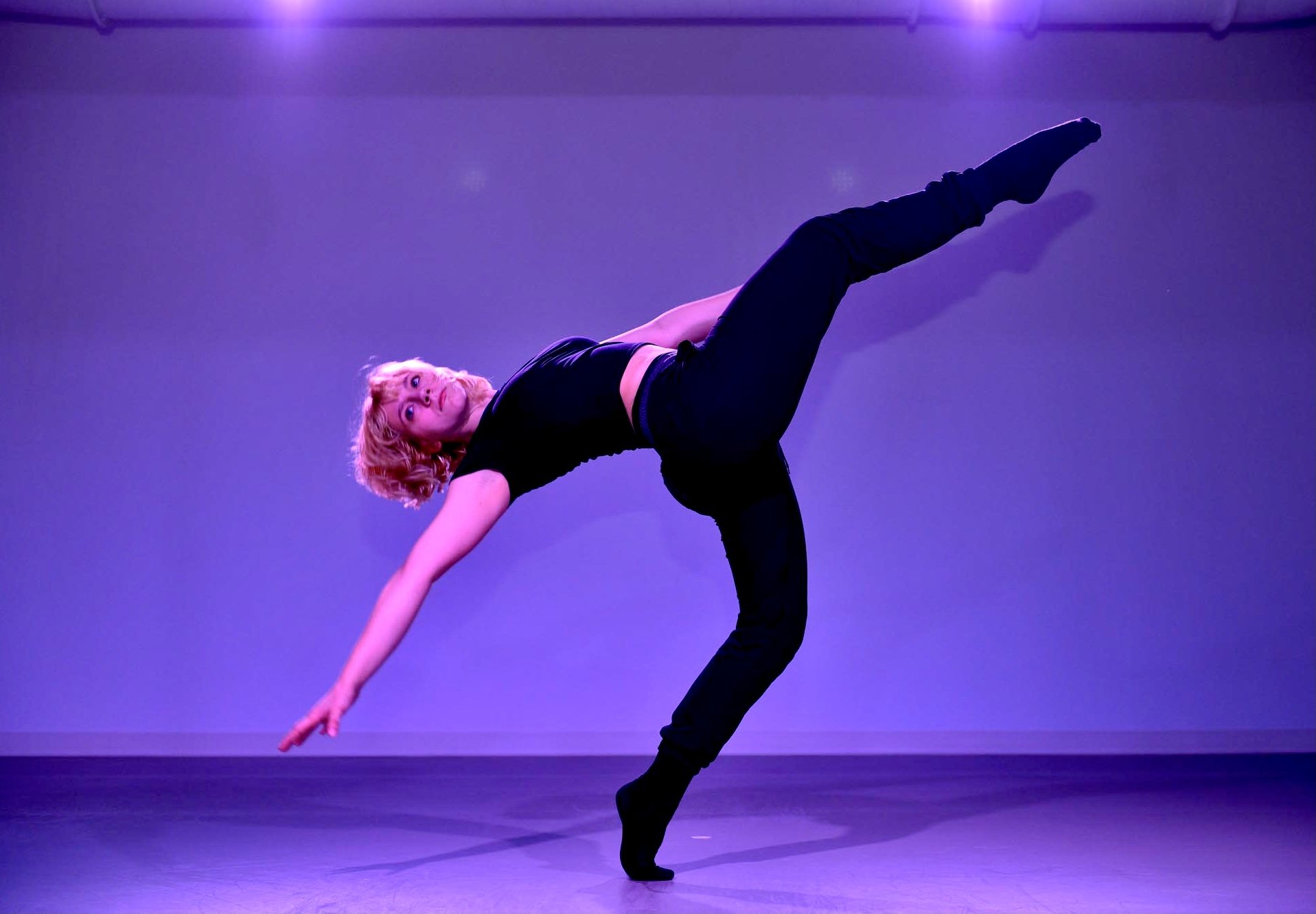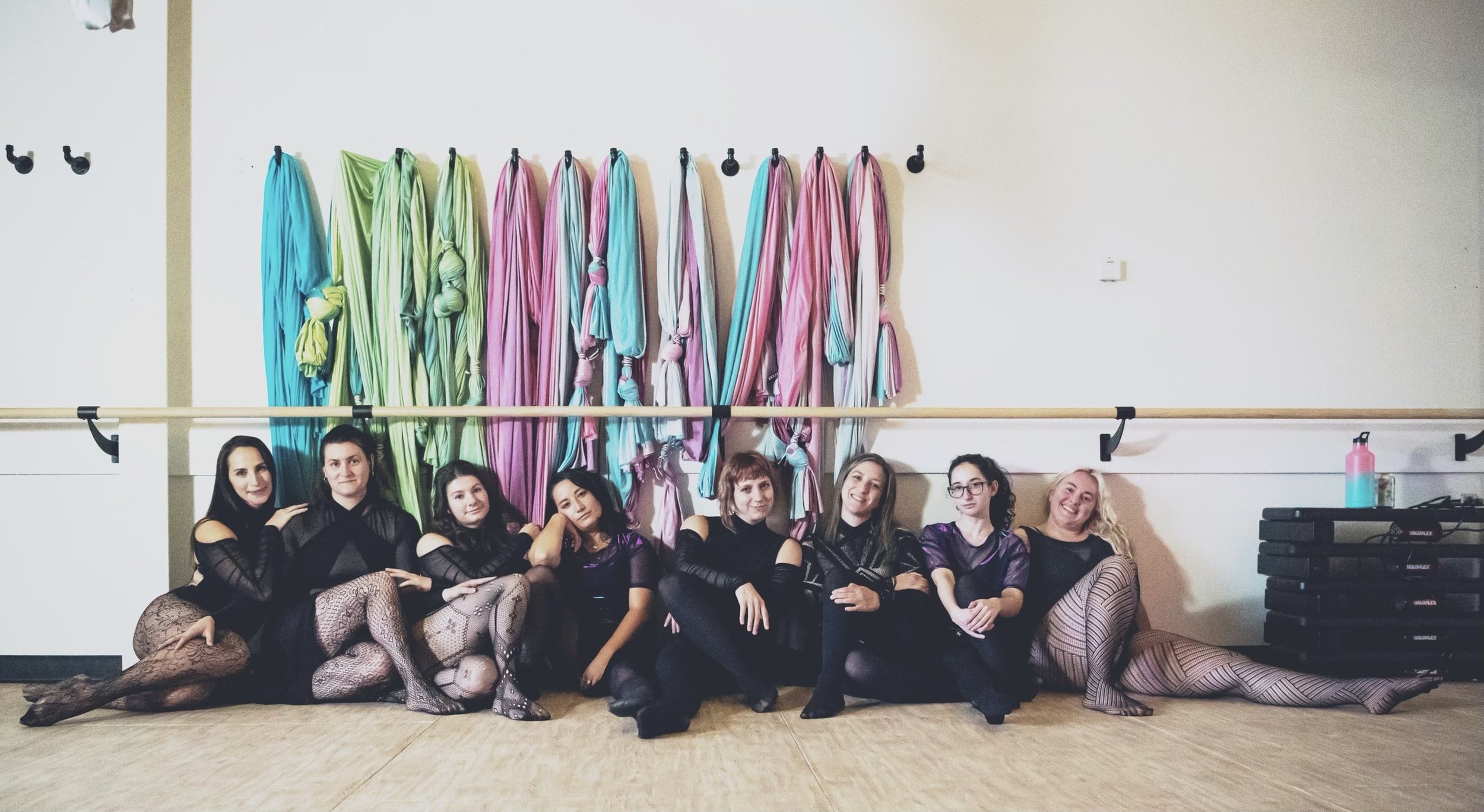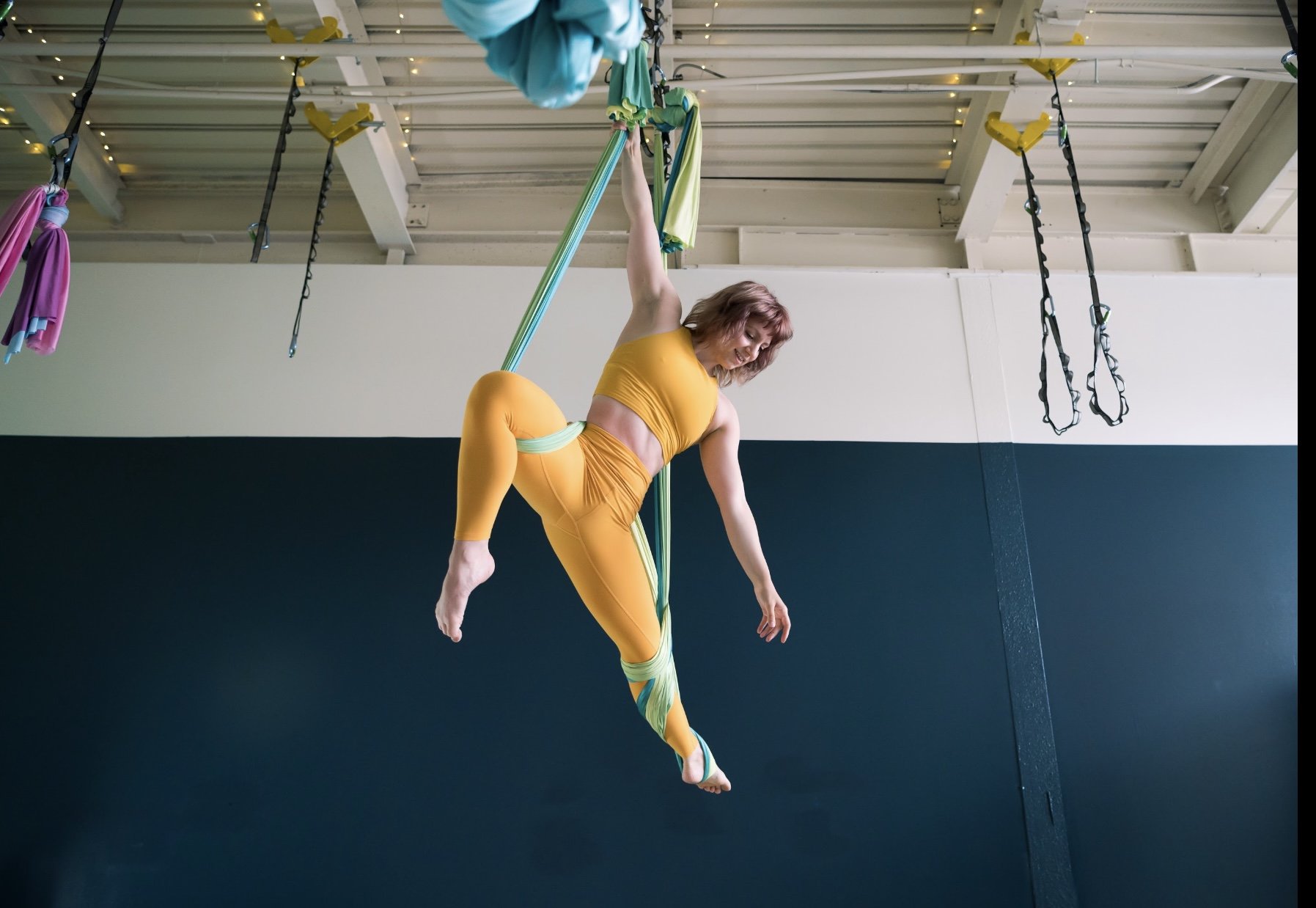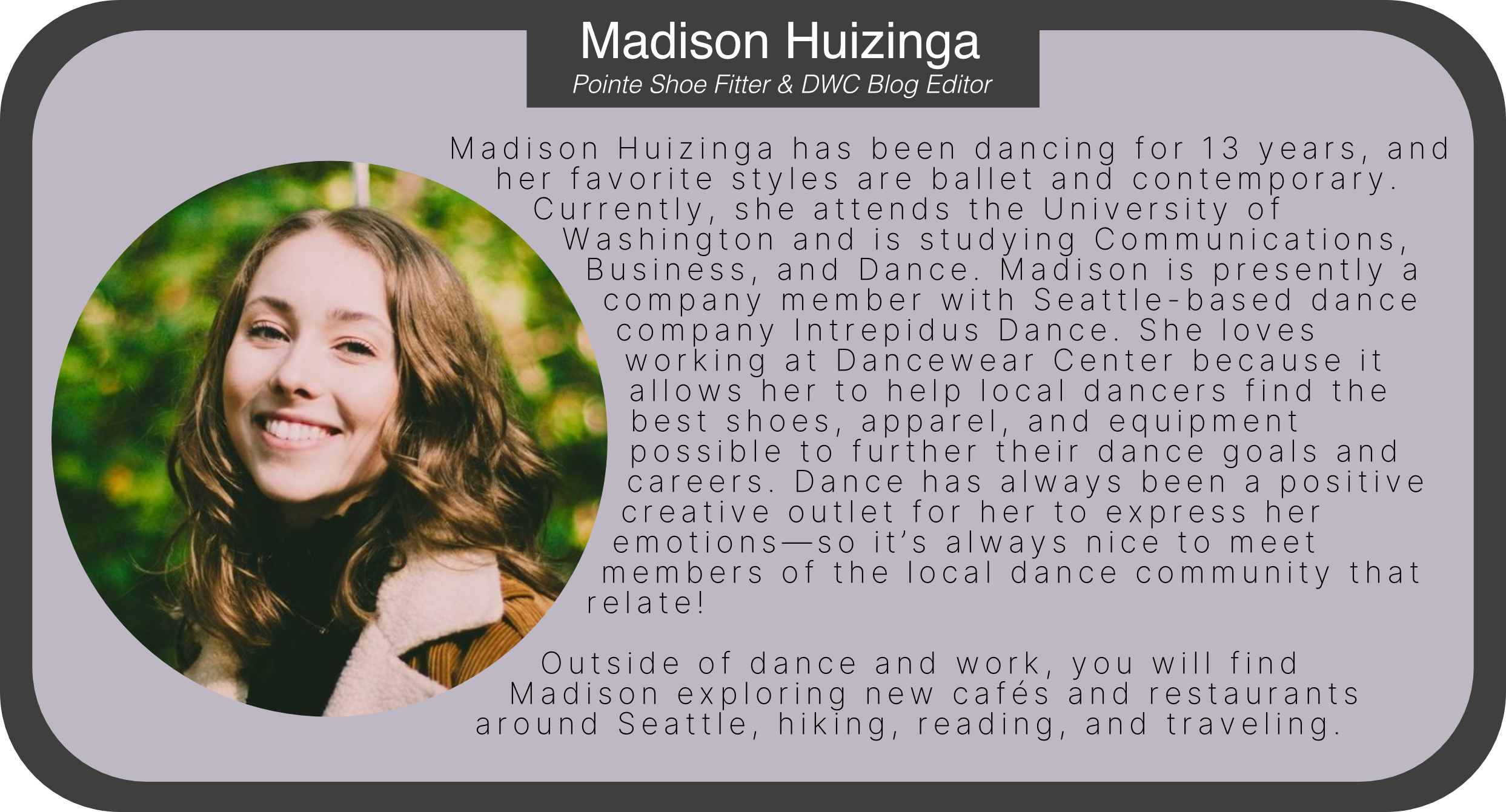“Flight Flock” and Intentionality Behind Movement
An Interview with Alexandra Sipe
By Madison Huizinga, DWC Blog Editor
Photo by Kojo Aqua
In our daily lives, movement is a constant occurrence. Whether it’s cars passing one another on the street or people strolling through a park, it seems as though folks are always in motion. What makes dance so special, particularly to Alexandra Sipe, is its process of systematizing this movement and utilizing it to move through time and space with others. Seattle-based artist and instructor Alexandra Sipe opens up about her fascination with this process, along with her dance journey and upcoming projects.
Dance was never an interest for Alexandra growing up, despite her mother having a master’s degree in Dance and teaching it at North Idaho College. When asked, Alexandra would repeatedly declare she would never be a dancer. But this all changed when she happened upon a 1970s recording of Maurice Bejart's rendition of “The Rite of Spring” toward the end of her high school career. She became intrigued and then obsessed with the animalistic movements and her inability to replicate them. Though she started her college years by declaring a major in English, she signed up for modern and jazz technique, eventually adding in ballet and dance composition. By the time she graduated, she had more dance, performance, and choreography credits than English credits and has some regrets about not adding dance as a double major.
Alexandra points out the many benefits she found in starting dance as an adult, including having a greater awareness of her body and being able to take classes from seasoned professors. Alexandra shares that the beginner students she teaches today always comment on what a graceful mover she is, expecting her to have been dancing her entire life. But she always stresses to them that her finesse did not come easily or all at once. “I had to claw my way up,” she shares, describing her experiences taking classes as an adult with teenagers.
Photo by Marcia Davis
In 2016, she moved to Seattle and began working at a dance studio as an administrator and costume coordinator. She also began dancing with Dancewear Center staff members Samantha Weissbach, Ethan Rome, and Melissa Koh Krienke and working on various projects. Eventually, Alexandra realized that she couldn’t remain sitting at her full-time job; movement is what made her most happy.
Later on, Alexandra got her bungee workout certification, and shortly after, completed her 200 hour yoga teacher certification. She also became the lead bungee instructor, later adding aerial work to her plate as well. “I totally shifted to teaching full-time,” she says, grateful she was able to incorporate more movement into her daily life. Alexandra has also continued to take class and research with the Seattle-based movement project known as Dance Undercurrent, which specializes in floor work. She has performed with Jerboa and enjoyed the partnerwork and improv opportunities. In 2021, she was invited to perform her solo work "Three Vignettes, Unrelated" at Seattle International Dance Festival. When describing her specialty, Alexandra shares that she identifies as a “floor monster,” drawn to grounded movement that takes her down to the floor.
Alexandra describes dance as a way to “be the universe while experiencing the universe.” “The act of moving through time and space” with the addition of other people is “just thrilling” to her. Even though humans are in constant motion around one another in public places, like the supermarket, the nonverbal communication that occurs within a dance space is unlike any other. “You codify the language of [movement] and then you really learn how to speak that language with your body,” Alexandra says. “And then you can do whatever you want with it.”
Alexandra shares that as she’s gotten older, she’s realized that the best times for her as a dancer are within a classroom. While the glitz and glamour of costumes and live performances are exciting, the experience of people coming together to move in a classroom is especially enticing.
One of the biggest challenges Alexandra has experienced in the dance realm is feeling comfortable calling herself a dancer, perhaps a residual effect of achieving technical proficiency relatively late compared to her peers. For a while, particularly after she graduated college, she pondered what she had to do to give herself the label. “There’s this struggle as you’re trying to make a living while also finding a way to continue your craft,” Alexandra shares, reflecting on her post-graduation days. Finding a balance between saying “yes” to dance jobs, while also partaking in dance projects that are artistically fulfilling is another tough balance Alexandra struggled to find. “Finding work that nourishes [me] is the hardest thing right now,” she voices.
Recently, Alexandra has been rather mesmerized by the movement of non-dancers and beginner dancers. Specifically, she’s interested in observing her fitness and yoga students’ curiosity about movement and giving them the tools they need to “be fed by the movement they do.” Alexandra describes the process of watching her students become happier, more efficient movers as “extremely rewarding.” She's been curious about building short movement patterns for her students to explore.
Alexandra is also working on building a teacher training at Flight Room, involving the utilization of floorwork, mid-space, and the upper space in the aerial silks. As an independent dance artist, she's enjoying delving more into her improv practice.
Photo by Marcia Davis
In the summer of 2021, Alexandra created Flight Flock, an aerial dance company of amateur aerial artists. Flight Flock had its first season last summer, featuring a live show with family and friends. She shares that many of the performers had never been a part of a live show before so it was exciting to watch them experience it for the first time. The company is set to start its second season in January of 2022 with a final performance in June. Alexandra shares that she’s received a lot of interest from more advanced dancers to join and says they’re more than welcome, although having some experience with aerial silks is advised.
Moving forward, Alexandra hopes to see dancers become more clear on the philosophy behind their movement. Even if it just means moving to “feel good” or “look good,” getting clear on the intention behind one’s movements can make the experience of dancing and choreographing a much more fulfilling and less egocentric one. “I feel like the most successful choreographers I’ve witnessed are the ones who are less interested in making the dancer move like them and more interested in letting the dancer move like themselves [and] fine-tuning that,” Alexandra says.



